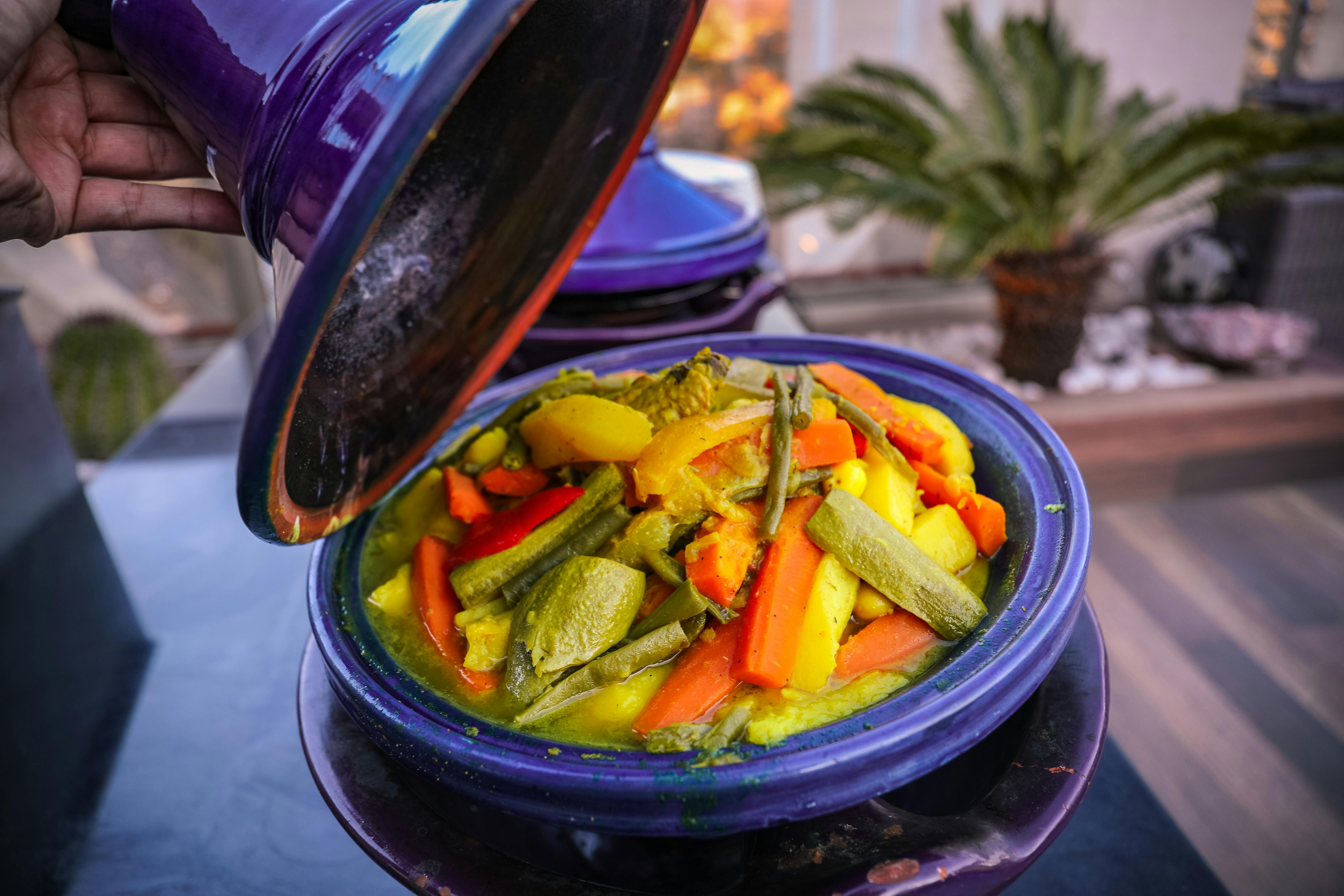A Culinary Journey to Discover the Subtleties of the Moroccan Cuisine
Moroccan cuisine, a culinary style that is as diverse as its landscapes, history, and culture, offers an intriguingly unique and exotic gastronomic experience. This article takes you on a culinary journey to explore the subtleties of Moroccan cuisine, its distinctive flavors, cooking techniques, and the cultural significance behind its dishes.

An Overview of Moroccan Cuisine
Moroccan cuisine, known for its rich flavors and the use of various spices, is a marriage of Berber, Arab, French, and other Mediterranean cuisines. The dishes range from sweet and savory tagines, couscous, bastilla (a sweet and savory pie), to an array of delectable pastries. The meals are often communal, reflecting the Moroccan tradition of sharing and hospitality.
The Art of Tagine Cooking
Tagine, a slow-cooked stew named after the earthenware pot it’s cooked in, is a staple Moroccan dish. The conical shape of the tagine pot allows for a unique method of cooking, where the steam rises, condenses, and drips back onto the stew, enhancing the flavors. Tagines usually contain meat, poultry, or fish along with vegetables, dried fruits, and a blend of spices.
The Magic of Moroccan Spices
Spices play an essential role in Moroccan cuisine. The most commonly used include saffron, cumin, coriander, ginger, and the all-important Ras el Hanout - a blend of up to 30 spices, translating to ‘head of the shop.’ This spice blend is the heart of many Moroccan dishes, each family having its unique recipe.
Moroccan Bread and Pastries
Bread, or ‘khobz,’ is a significant part of every Moroccan meal and is used as a utensil to scoop up food. There’s also a variety of Moroccan pastries, both sweet and savory, such as the ‘msemen’ (a flaky, square-shaped pancake), and ‘sfenj’ (a doughnut-like pastry).
The Moroccan Tea Culture
Moroccan culture is incomplete without mentioning its tea culture. Mint tea, also known as ‘Moroccan whiskey’, is a symbol of Moroccan hospitality. It is usually served three times to guests, each brew representing a different aspect of life - love, life, and death.
Fascinating Facts & Insights
- The traditional Moroccan meal begins with a series of hot and cold salads followed by a tagine.
- Pastilla is a popular Moroccan dish that was introduced by the Spanish during the 15th century.
- Couscous, a staple Moroccan food, was listed as part of the world’s intangible cultural heritage by UNESCO in 2020.
In conclusion, Moroccan cuisine is a delightful culinary journey that offers a taste of the country’s rich culture and history. The blend of flavors and the unique cooking techniques make it a gastronomic adventure worth exploring for any food enthusiast. So, the next time you’re in the mood to try something exotic and flavorful, why not give Moroccan cuisine a spin?




